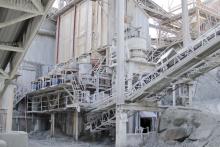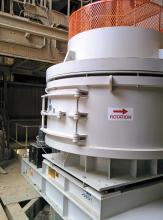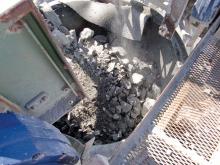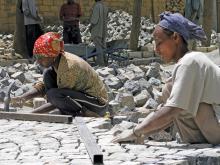The City of Winnipeg has changed its road construction guidelines in a move that will affect the types of aggregate used in its pavement foundations.
According to a report out this week on the Journal of Commerce website, the changes are expected to extend the lifespan of new streets in the Manitoba capital.
The JoC report says that councillor Matt Allard, chairman of Winnipeg’s Infrastructure and Public Works Committee, wants to see the city’s road construction materials specs updated and aligned with those of other jurisdictions.
“With the new specs, the road base is harder and dries faster,” said Allard.
One significant change is that, from now on, recycled concrete can be used as road base and sub-base only for collector roads and local roads, not the more heavily travelled regional streets.
The new specifications could help reduce Winnipeg’s large infrastructure deficit, says Allard.
“I used to think the problem was caused by under-funding,” he said. “But then I realized there’s plenty of room to improve our processes, so that we can build better roads.”
Following this year’s road construction season, which runs from mid-May until freeze-up in late fall/early winter, the Infrastructure and Public Works Committee will receive an update on the new guidelines says the JoC report.
The new specs are the result of eight years of research in the lab and in the field by University of Manitoba civil engineering professor Ahmed Shalaby and his Pavement Research Laboratory.
He says the city’s previous specs did not incorporate sufficiently tight controls on limestone, gravel and recycled concrete base materials.
“Now is a good time for the city to update those specifications,” said Shalaby.
His research showed that by using coarser aggregates and fewer fines, it is possible to build a stiffer and more permeable road base and sub-base.
“This has implications for road design, as less material and less maintenance will be required, which could reduce costs,” said Shalaby. “The idea is to protect the investment in roads by designing cost-effective and durable road structures.”
The new specifications apply to new streets as well as existing streets that receive full reconstruction, with one exception.
In 2020, private developments will continue to use the old specifications. In addition, they will conduct pilots using the new specs.
Shalaby says the change is a positive one for Winnipeg: “The old specifications are 30-40 years old (and) the new ones represent a significant change, not a minor tweak. They will bring Winnipeg’s specs up to the standards of other Canadian cities.”
Shalaby says the new specifications will mean weaker and less effective road base and sub-base materials will be rejected: “That may increase the cost of aggregate, but a reduced amount of aggregate will be needed, so the total cost may be less.”
The new road-building specs have some Manitoba industry groups concerned that they might be affected adversely by them.
The Manitoba Heavy Construction Association (MHCA) has committed to forming a working group with Winnipeg’s Public Works Department to consult on them.
The group includes the Association of Consulting Engineering Companies – Manitoba and the Urban Development Institute of Manitoba.
MHCA president Chris Lorenc says that, in addition to changing the gradation and type of aggregates that are used to construct road base and sub-base, the new specs will increase the number of sieve tests and the quality control and quality assurance processes.
They will also introduce payment adjustments if, for example, a tested load of aggregate fails to meet the city’s standards for moisture and drainage.
To help with the working group’s review of the specs during the 2020 construction season, the MHCA will be asking its contractor and aggregate supplier members to share test data.
“We all want to build good roads that last longer,” said Lorenc. “The challenge has been how to do that in a way that industry can respond and adjust at all points of the construction process, from sourcing the aggregates to testing at the quarry and at site and then, as construction is happening, how to get the test results back in a timely fashion so we can complete the project in time.”
Industry is also concerned about the effect of the new specs on using recycled concrete as aggregate in building new roads.
Initially, Lorenc says, industry worried that the new specs would all but eliminate recycled concrete as a material.
The Winnipeg Public Works Department and industry, however, will work together to ensure recycled concrete meets the specifications, so it can be used for some roads, he says.







